
Trumpeter Jacques Coursil's in duo with double bassist Alan Silva, frequently using the bow, recorded over two days at La Muse en Circuit, Alfortville, France; intimate and lyrical dialog from two old friends in 3 sessions for the late trumpeter Bill Dixon.
Out of Stock
Quantity in Basket: None
Log In to use our Wish List
Shipping Weight: 3.00 units
Sample The Album:
Jacques Coursil-trumpet
Alan Silva-doublebass
Click an artist name above to see in-stock items for that artist.
UPC: 3760131270525
Label: RogueArt
Catalog ID: ROG-0052
Squidco Product Code: 18924
Format: CD
Condition: New
Released: 2014
Country: France
Packaging: Digipack
Recorded on November 22nd and 23rd, 2011, by Christophe Hauser at La Muse en Circuit, Alfortville, France.
"The three free sessions of Free Jazz Art, in duo with Alan Silva, came out in one go (with Christophe Hauser, sound engineer and subtle arranger). Alan knew all the procedures in advance having lived through the same experience with Dixon though at a different period. It was easy, because he and I are old friends, having so often played together and so often wandered in the hectic New York of the sixties. Already at that time, he had found his remarkable style of bowed double bass."-Jacques Coursil

The Squid's Ear!
Artist Biographies
• Show Bio for Jacques Coursil "Trumpeter, composer and scholar Jacques Coursil died on 26 June 2020 in Plombières, Belgium. He was 82. One of the few Europeans to have travelled to New York to take part in its avant garde movement of the 1960s, his trumpet added an original voice to a decisive moment in jazz history. Coursil was born in the Montmartre area of Paris on 31 March, 1938 and grew up in the city's suburbs. His parents were from Fort-de-France, Martinique, in the French West Indies. Creole songs, biguine, clarinettist Alexandre Stellio's music and the Gregorian chants of churches made up the family's musical environment. Coursil's mother sung, and literature held an important place in the household. His father, a former sailor, was a syndicalist and French Communist Party member. After a tentative start on the violin at age nine, Coursil took up the cornet as a teenager. Early jazz interests included New Orleans players Sidney Bechet and Albert Nicholas. A live performance by saxophonist Don Byas left a strong mark. Contemporary classical music - Arnold Schoenberg, Anton Webern - and Pierre Schaeffer's experimentations were other strong early interests. In 1958, during decolonisation, Coursil left for Africa. He travelled for three years to Mauritania and Senegal, joining the entourage of Léopold Sédar Senghor, negritude writer and first president of independent Senegal. Back in France, Coursil studied literature and mathematics. He worked as a schoolteacher in Dieulefit, southern France, while attending the nearby Montélimar conservatory. Selling his extensive library, Coursil moved to New York in 1965, without contacts but with knowledge of the jazz avant garde. He found work bartending at East Village jazz club The Dom. "Coming to the free jazz scene, I firmly intended to deconstruct the whole apparatus of rhythm," Coursil told writer Jason Weiss in Always In Trouble: An Oral History Of ESP-Disk', The Most Outrageous Record Label In America. "I wanted to 'destroy' the beat and harmony too... I wanted to play atonal without any rhythmic framework. I also wanted to stop playing scales, to get away from melody. I was clear on that." Coursil joined drummer Sunny Murray's band, leading to his first recording session for Murray's self-titled ESP-Disk' in January 1966. "Everybody plays legato now. I hate it. This is why I play in a very articulate manner," wrote Coursil in Actuel magazine in 1968. "A melodic line, a sonic sentence, needs to be organised rhythmically. It needs spirit, swing, but that swing doesn't have to be framed in a regular metre. An atonal and arhythmic phrase has to contain a certain amount of swing for it not to seem escaped directly from John Cage's zoo." Leaving Murray's band, Coursil joined tenor saxophonist Frank Wright's first quintet, with drummer Muhammad Ali and bassist Henry Grimes. Alto saxophonist Arthur Jones was also a member and his partnership with Coursil would last for several years. The unit recorded Your Prayer for ESP in May 1967. Coursil studied with pianist Jaki Byard and composer Noel DaCosta. Now focussing more on composition, he recorded his own leader date for ESP, with saxophonist Marion Brown. It remains unreleased. He wrote the 40 minute serialist Black Suite and an extended mass for choir and orchestra. "It might not please the Pope, this old racist who banned jazz, the music of black people, from churches, as if the gifts of Balthazar were in some way degrading," he wrote of the work in Actuel. In addition to music, Coursil led what he termed a double life, teaching French by day at the prestigious United Nations International School and writing for Actuel. New York associates of the 1960s also included Rashied Ali, Alan Silva, Bill Dixon, Perry Robinson, Clarence 'C' Sharpe, Mark Whitecage, Burton Greene and Paul Bley. Coursil rehearsed briefly with The Sun Ra Arkestra. During the summer of 1969, he visited France with Arthur Jones, taking part in sessions for the BYG label, then taping the first records in its Actuel series. Coursil made two LPs under his name - Way Ahead and a realisation of his Black Suite - and played on Burton Greene's Aquariana. The sessions' core personnel included Jones, bassist Beb Guérin and drummer Claude Delcloo. Coursil's band shared the stage of the American Center and the Lucernaire Theatre with pianist François Tusques and the recently arrived Art Ensemble Of Chicago and Anthony Braxton, who plays on Black Suite. New York activity dwindled down, ceding ground for Coursil's academic pursuits. Shortly before leaving the city permanently in 1975, the trumpeter added a new technique to his repertory. "I was walking on Park Avenue [and] met my good friend Jimmy Owens... I said to him, Would you tell me how to do circular breathing? And as he was walking towards his home, he picked up straws from the cafeteria and he showed me the trick. And then I... started stopping all the cliches that I heard and learned... Then dropping all the cliches I have invented myself... And from then until now, it's just been one note," Coursil told All About Jazz New York in 2005. Retreating from public performance, Coursil obtained two doctorates from the Université de Caen in Northwestern France, where he taught for two decades. A 1977 linguistics dissertation was entitled Recherches linguistiques sur la parole (Linguistic Researches On Speech). A 1992 applied science dissertation was entitled Grammaire analytique du français contemporain: Essai d'intelligence artificielle et de linguistique générale (Analytical Grammar Of Contemporary French: Essay In Artificial Intelligence And General Linguistics). Coursil taught literature and theoretical linguistics. After Caen, he worked at the Université des Antilles et de la Guyane in Martinique, Cornell University in Ithaca, NY, and at the University of California, Irvine. In addition to numerous papers, he published in 2000 La fonction muette du langage: Essai de linguistique générale contemporaine (The Silent Function Of Language: Essay In General Contemporary Linguistics), and in 2015 Valeurs pures: Le paradigme sémiotique de Ferdinand de Saussure (Pure Values: The Semiotic Paradigm Of Ferdinand De Saussure). After more than three decades without records - but not entirely without performances, notably with François Tusques in 1981 - Coursil issued Minimal Brass in 2005. Initiated for his Tzadik label by saxophonist John Zorn, a former student of Coursil, the project was a solo album of fanfares made up of multiple overdubbed parts using circular breathing. Clameurs and Trail Of Tears followed in 2007 and 2010 (both Universal Music France). Recorded in Martinique, the former featured pieces for trumpet and spoken word - drawing on the work of writers such as Frantz Fanon and Édouard Glissant - against a percussion and synthesizer pads background. The latter was an extended work dealing with the deadly forced relocation of Native Americans by the US government in the 1830s. The album included a reunion with his former colleagues from the free jazz scene. Coursil's final album was FreeJazzArt: Sessions For Bill Dixon, a duet with Alan Silva issued by RogueArt in 2014."This is my last free jazz record," he said, "I won't make others." "-The Wire ^ Hide Bio for Jacques Coursil • Show Bio for Alan Silva "Alan Silva (born Alan Lee da Silva; January 22, 1939 in Bermuda) is an American free jazz double bassist and keyboard player. Silva was born a British subject to an Azorean/Portuguese mother, Irene da Silva, and a black Bermudian father known only as "Ruby". He emigrated to the United States at the age of five with his mother, eventually acquiring U.S. citizenship by the age of 18 or 19. He adopted the stage name of Alan Silva in his twenties. Silva was quoted in a Bermudan newspaper in 1988 as saying that although he left the island at a young age, he always considered himself Bermudian. He was raised in the Harlem neighborhood of New York City, where he first began studying the trumpet, and moved on to study the upright bass. Silva is known as one of the most inventive bass players in jazz and has performed with many in the world of avant-garde jazz, including Cecil Taylor, Sun Ra, Albert Ayler, Sunny Murray, and Archie Shepp. Silva performed in 1964's October Revolution in Jazz as a pioneer in the free jazz movement, and for Ayler's Live in Greenwich Village album. He has lived mainly in Paris since the early 1970s, where he formed the Celestrial Communication Orchestra, a group dedicated to the performance of free jazz with various instrumental combinations. In the 1990s he picked up the electronic keyboard, declaring that his bass playing no longer surprised him. He has also used the electric violin and electric sarangi on his recordings. In the 1980s Silva opened a music school I.A.C.P. (Institute for Art, Culture and Perception) in Central Paris, introducing the concept of a Jazz Conservatory patterned after France's traditional conservatories devoted to European classical music epochs. Since around 2000 he has performed more frequently as a bassist and bandleader, notably at New York City's annual Vision Festivals." ^ Hide Bio for Alan Silva
4/2/2025
Have a better biography or biography source? Please Contact Us so that we can update this biography.
4/2/2025
Have a better biography or biography source? Please Contact Us so that we can update this biography.
Track Listing:
1. An Evening And A Night At The ANNEX Bar Part 1 3:14
2. An Evening And A Night At The ANNEX Bar Part 2 3:51
3. An Evening And A Night At The ANNEX Bar Part 3 2:25
4. An Evening And A Night At The ANNEX Bar Part 4 4:01
5. An Evening And A Night At The ANNEX Bar Part 5 2:41
6. Brooklyn Bridge, The River, The Metal And The Wind Part 1 3:05
7. Brooklyn Bridge, The River, The Metal And The Wind Part 2 3:08
8. Brooklyn Bridge, The River, The Metal And The Wind Part 3 2:51
9. Brooklyn Bridge, The River, The Metal And The Wind Part 4 2:21
10. Brooklyn Bridge, The River, The Metal And The Wind Part 5 2:41
11. Bennington-New York, Round Trip Part 1 2:04
12. Bennington-New York, Round Trip Part 2 2:26
13. Bennington-New York, Round Trip Part 3 1:30
14. Bennington-New York, Round Trip Part 4 2:47
15. Bennington-New York, Round Trip Part 5 3:57
Improvised Music
Jazz
European Improv, Free Jazz & Related
Duo Recordings
Duo Recordings
Instant Rewards
Search for other titles on the label:
RogueArt.

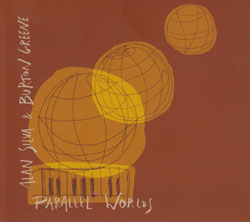


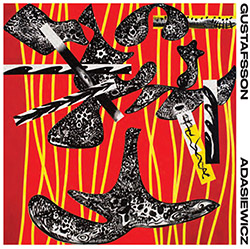






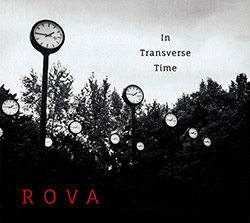
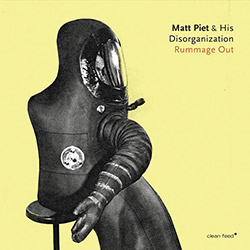




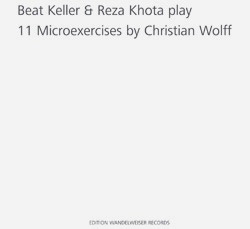










![Niblock, Phill / Anna Clementi / Thomas Stern: Zound Delta 2 [VINYL]](https://www.teuthida.com/productImages/misc4/34623.jpg)
![Yoko, Ono / The Great Learning Orchestra: Selected Recordings From Grapefruit [2 CDs]](https://www.teuthida.com/productImages/misc4/35841.jpg)
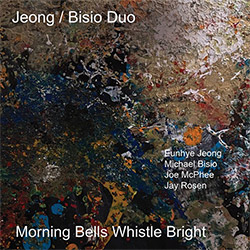
![Brotzmann, Peter / John Edwards / Steve Noble / Jason Adasiewicz: The Quartet [2 CDs]](https://www.teuthida.com/productImages/misc4/35975.jpg)
![Brotzmann, Peter / John Edwards / Steve Noble / Jason Adasiewicz: The Quartet [VINYL 2 LPs]](https://www.teuthida.com/productImages/misc4/35976.jpg)
![Thomas, Pat: The Solar Model of Ibn-Al Shatir [VINYL]](https://www.teuthida.com/productImages/misc4/36044.jpg)
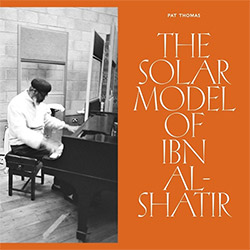

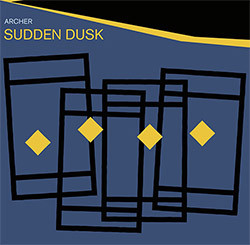

![Rodrigues, Ernesto / Nuno Torres / Guilherme Rodrigues: Whispers In The Moonlight - In Seven Movements [2CDs]](https://www.teuthida.com/productImages/misc4/35765.jpg)
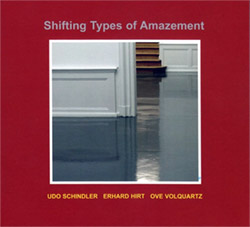

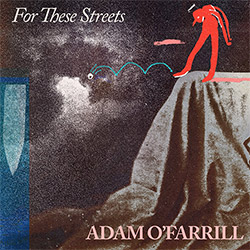
![Cocks, Laura: FATHM [VINYL]](https://www.teuthida.com/productImages/misc4/36055.jpg)
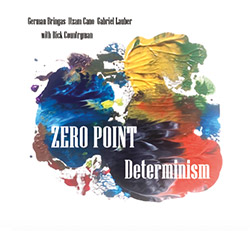
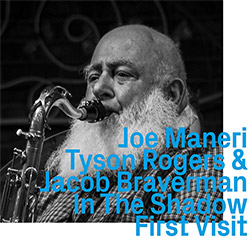
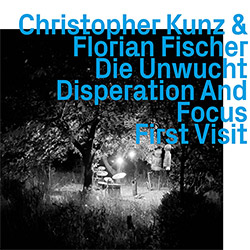
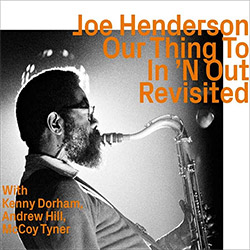

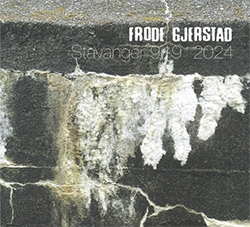
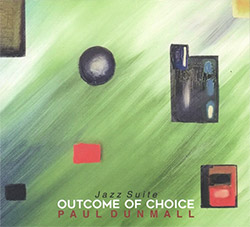
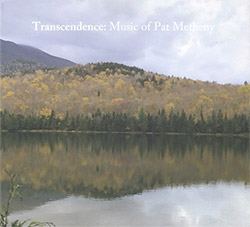
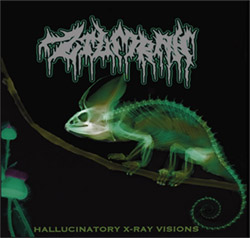
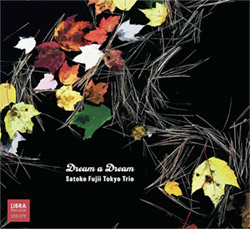
![Ackerley / Prymek / Turner: All Hope With Sleeping Minds [CASSETTE]](https://www.teuthida.com/productImages/misc4/35950.jpg)
![Myers, David Lee : Tin Drop Tear [BOOK w/ DOWNLOAD]](https://www.teuthida.com/productImages/misc4/36030.jpg)

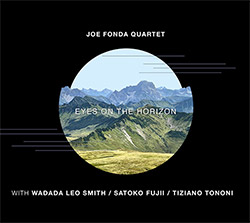
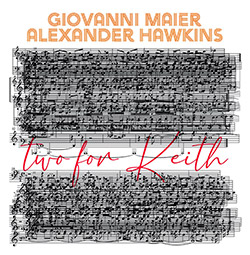
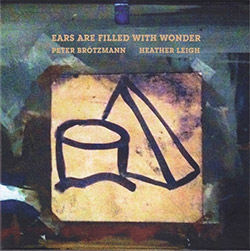
![Schindler, Udo / Sandy Ewen / Damon Smith: Munich Sound Studies Vols. 4, 5 & 6 [3 CDs]](https://www.teuthida.com/productImages/misc4/35966.jpg)
![Turbulence Orchestra & Sub-Units: Smear Out the Difficulties (Double Live) [2 CDs]](https://www.teuthida.com/productImages/misc4/36048.jpg)


![Perelman, Ivo / Tyshawn Sorey: Paralell Aesthetics [2 CDs]](https://www.teuthida.com/productImages/misc4/35871.jpg)
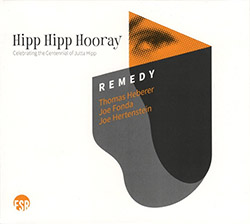

![Sjostrom, Harri: SoundScapes #4 Festival Berlin 2023 [3 CDs]](https://www.teuthida.com/productImages/misc4/35874.jpg)
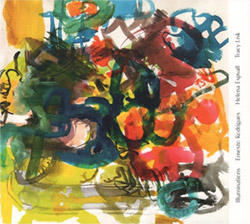


![Glenn, Jordan: Flustered [CASSETTE]](https://www.teuthida.com/productImages/misc4/35948.jpg)


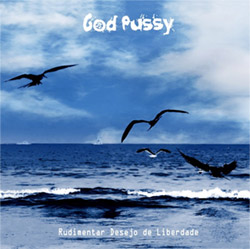

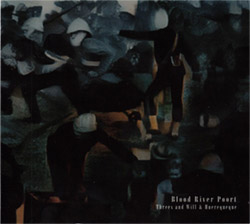
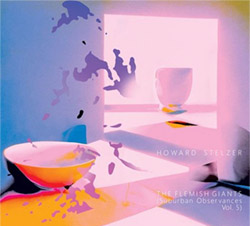
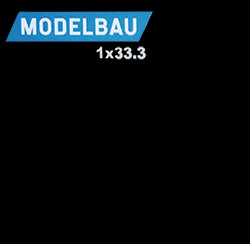
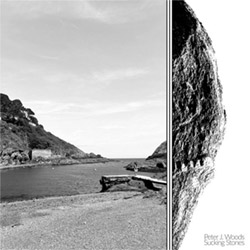
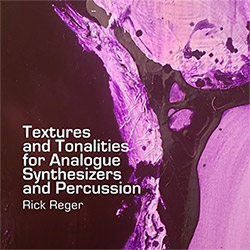

![Olencki, Weston : Pearls Ground Down To Powder [VINYL]](https://www.teuthida.com/productImages/misc4/35956.jpg)
![Myers, David Lee: Oculus [2CDs]](https://www.teuthida.com/productImages/misc4/35857.jpg)


![dustsceawung: dustsceawung [CASSETTE w/ Download]](https://www.teuthida.com/productImages/misc4/35753.jpg)
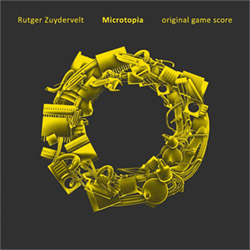



![Halls of the Machine: Atmospheres For Lovers And Sleepers [CASSETTE w/ DOWNLOAD]](https://www.teuthida.com/productImages/misc4/35806.jpg)
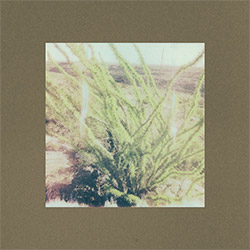
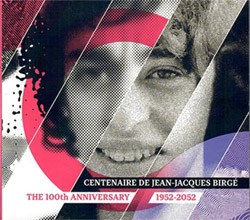
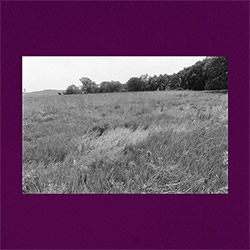
![AHC (Alexander Cooper): Lase [2 CDs]](https://www.teuthida.com/productImages/misc4/35754.jpg)



![Fagaschinski, Kai / Yan Jun : Graveyard Processions [VINYL w/ DOWNLOAD]](https://www.teuthida.com/productImages/misc4/35474.jpg)









![Zorn, John / JACK Quartet: The Complete String Quartets [2 CDs]](https://www.teuthida.com/productImages/misc4/35609.jpg)

![Lonsdale, Eden: Dawnings [2 CDs]](https://www.teuthida.com/productImages/misc4/35480.jpg)







![Sanna, Claudio: Compositori Sardi Contemporanei II [2 CDs]](https://www.teuthida.com/productImages/misc4/35317.jpg)







![Zurria, Manuel: Fame di Vento [3 CDs]](https://www.teuthida.com/productImages/misc4/35167.jpg)


![Electric Bird Noise / Derek Roddy: 8-10-22 [CD EP]](https://www.teuthida.com/productImages/misc4/35970.jpg)








![Elephant9 : Mythical River [VINYL]](https://www.teuthida.com/productImages/misc4/34624.jpg)



![Elephant9 with Terje Rypdal: Catching Fire [VINYL 2 LPs]](https://www.teuthida.com/productImages/misc4/35355.jpg)
![Deerlady (Obomsawin, Mali / Magdalena Abrego): Greatest Hits [VINYL]](https://www.teuthida.com/productImages/misc4/34876.jpg)







![Surplus 1980: Illusion of Consistency [CD]](https://www.teuthida.com/productImages/misc4/35069.jpg)
![Staiano, Moe: Away Towards the Light [VINYL + DOWNLOAD]](https://www.teuthida.com/productImages/misc4/35037.jpg)



![Caveira (Gomes / Sousa / Abras / Ferrandini): Ficar Vivo [VINYL]](https://www.teuthida.com/productImages/misc4/34643.jpg)
![Coley, Byron: Dating Tips for Touring Bands [VINYL]](https://www.teuthida.com/productImages/misc4/17906.jpg)

![Lost Kisses: My Life is Sad & Funny [DVD]](https://www.teuthida.com/productImages/misc4/lostKissesDVD.jpg)